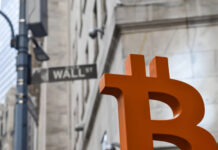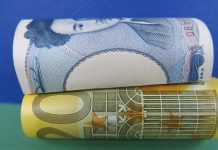AUD rose to a one-month high amid solid GDP estimates
The Australian dollar rose 0.64% on Wednesday amid the release of solid growth figures for the first quarter. The better-than-expected GDP figures caught investors off guard as many were expecting the Australian economy to have suffered more during the first three months of the year. The gross national product rose 1.7% y/y compared to 1.6% median forecast. On a quarter-over-quarter basis, the economy grew 0.3% (seasonally adjusted).
Looking at the detail, the picture is not that rosy as consumer spending slowed down in the first quarter, capital expenditures were quite soft and mining inventories exploded. Today’s figures were indeed good news, however the weakness seems to be broad based, suggesting that an acceleration in growth is more than unlikely.
The appreciation of the Aussie over the last week looks mad and we believe this is more due to the broad USD weakness rather than due to Australian fundamentals. Investors are looking for yields and the AUD is still an interesting alternative, especially against the backdrop of failing Trumponomics.
After rallying 2.5% since June 1st, AUD/USD is currently testing the 0.7556 resistance (high from May 2nd). A break of the latter would open the road toward the following resistance area at around 0.76. On the downside, a support lies at 0.7469 (Fibonacci 38.2% on May-June rally).
EURCHF remains marginally stable
Global risk appetite remains shaky heading into an event filled Thursday. S&P fell 0.4% while US long end yields fell 5bp – both clearly suggesting risk aversion. The concern around the pace of the Fed tightening cycle and low inflation print combined with general risk off sentiment has allowed JPY to gain nearly 4.50% against the USD. However, the other major safe-haven cross EURCHF has not benefited as aggressively. CHF has only gained 1.30% against the EUR which is surprising considering the size of the broader FX moves.
One rationale is the SNB remains active in managing any CHF appreciation (although SNB FX reserves fell marginally) while the other is that there is increased expectation that the ECB era of unorthodox policy is heading, albeit slowly, to a close. There is increasing probability that at tomorrow’s ECB meeting Draghi could take the first baby step towards removing emerging monetary policy. This could come in a shift in wording on the balance of risk or stating that interest rate are less likely to go lower.
But to investors that would be as clear a signal as ending asset purchases or rising interest rates. In addition, trading EU will always come with perpetual political risk and now is not different. Yet, in the near term European political risk has declined which lessens capital flight pressure. ECB tapering sentiment increase should rise the threshold for disruptive social / political risks and allow EURCHF to steadily appreciate.
Germany Factory orders disappoint
German Factory orders declined – surprisingly – more than expected in April at -2.1% m/m. Indeed, recent economic data was on the strong side and showed that Germany was on a strong recovery road.
The Factory Orders forecast, even though negative, was way more optimistic. Markets estimated the data to slightly decline to -0.3%. We now wonder whether there is a reason to worry after the very positive first half of the year. It is anyway important to notice that the annualized data remains largely positive with a +3.5% print.
As explained above, other economic fundamentals are positive. Growth is running at a strong pace above Eurozone average at 0.6% for Q1 and the labour market is widely recovering. Unemployment has never been so low. So today’s Factory Orders seem to be contradicting the current momentum in Germany.
Amid the release of this German data, the single currency is trading mixed and remains below 1.1300. Markets are optimistic of the Eurozone recovery and continue pricing in US difficulties.














